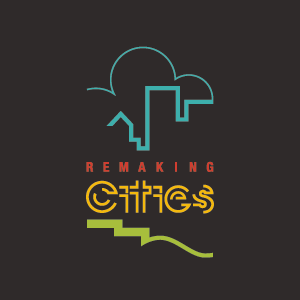Remaking Cities Institute Faculty to Work with Monessen and Shaler on Traffic21 Smart Mobility Challenge Projects

This past month, Carnegie Mellon University’s Traffic21 announced the City of Monessen, the Township of Shaler, and Heritage Community Transportation as the winners of its third annual Smart Mobility Challenge. Traffic21, a research institute operated out of CMU’s Heinz College of Information Systems and Public Policy, and Mobility21, its affiliated U.S. Department of Transportation (USDOT) National University Transportation Center in the College of Engineering, sponsored this year’s challenge with generous funding from the Hillman Foundation and the USDOT as a continuation of its mission of transforming southwestern Pennsylvania into a testbed for mobility innovation.
Ray Gastil, Director of the Remaking Cities Institute (RCI) at CMU’s School of Architecture, will serve as principal investigator (PI) for two projects: working with The City of Monessen, led by Mayor Matt Shorraw; and working with Walk Bike Shaler, in partnership with the Township of Shaler. Robert Joseph Tamburo, Senior Project Scientist at The Robotics Institute at CMU, will partner with RCI on both projects. Associate Studio Professor Jonathan Kline will join on the Monessen project, with faculty member Stephen Quick working on the Shaler study.
“By partnering with Monessen and Shaler, Traffic21 is providing a critical opportunity to investigate the ways that innovative mobility integrated with urban design can improve communities throughout the region,” Gastil said.
Tamburo added, “This will be an exciting application of computer vision technology to provide an abundance of in-depth information for a better understanding of any mobility challenges faced by these communities.”
The City of Monessen, led by Mayor Shorraw, will partner with CMU researchers led by the RCI to inform and contribute to the ongoing work of the City of Monessen on its Comprehensive Plan and related initiatives related to mobility, equity, and safety focused on Mid-Downtown Monessen. CMU, providing urban design and computer vision expertise, will deploy cameras for visual data, develop computer vision algorithms to analyze data, and develop mobility/urban design recommendations from the data to be responsive to community priorities. Monessen’s pattern of a riverfront downtown is a mobility/urban design case study relevant to numerous municipalities in Southwestern PA and nationally.
“I’m thrilled to work with CMU’s Traffic21 in order to take thoughtful, data-driven steps to improving Monessen’s Mid-Downtown District, which has been neglected for years,” Mayor Shorraw said. “Downtown Monessen could serve as a case study for our entire region on how to begin the thoughtful process if rebuilding post-industrial, Rust Belt communities.”
Walk Bike Shaler, in partnership with the Township of Shaler, will join with CMU researchers led by the RCI with the support of the Township of Shaler, to inform and contribute to the Better Boulevard initiative. As with the Monessen project, CMU will provide urban design and computer vision expertise, will deploy cameras for visual data, develop computer vision algorithms to analyze data, and develop mobility/urban design recommendations from the data and responsive to community priorities. Shaler’s pattern of a long Main Street in a suburban context is a mobility/urban design case study relevant to numerous municipalities in Southwestern PA and nationally.
“What we’ve come to call the Better Boulevard initiative is really a new community vision,” said Chris Chirdon, Director of Walk Bike Shaler. “It’s not ‘just about sidewalks’ or any one improvement – building a Better Boulevard requires different approaches in order to provide safe, comfortable, equitable, and enjoyable access to the many cultural and economic resources along Mt Royal Boulevard. But we first need to understand ‘what we have’ and ‘what we need’ so we can choose solutions that work. This Traffic21 award is an essential component which will provide the data and evidence needed to inform future actions towards a Mt Royal Boulevard that better serves our community.”